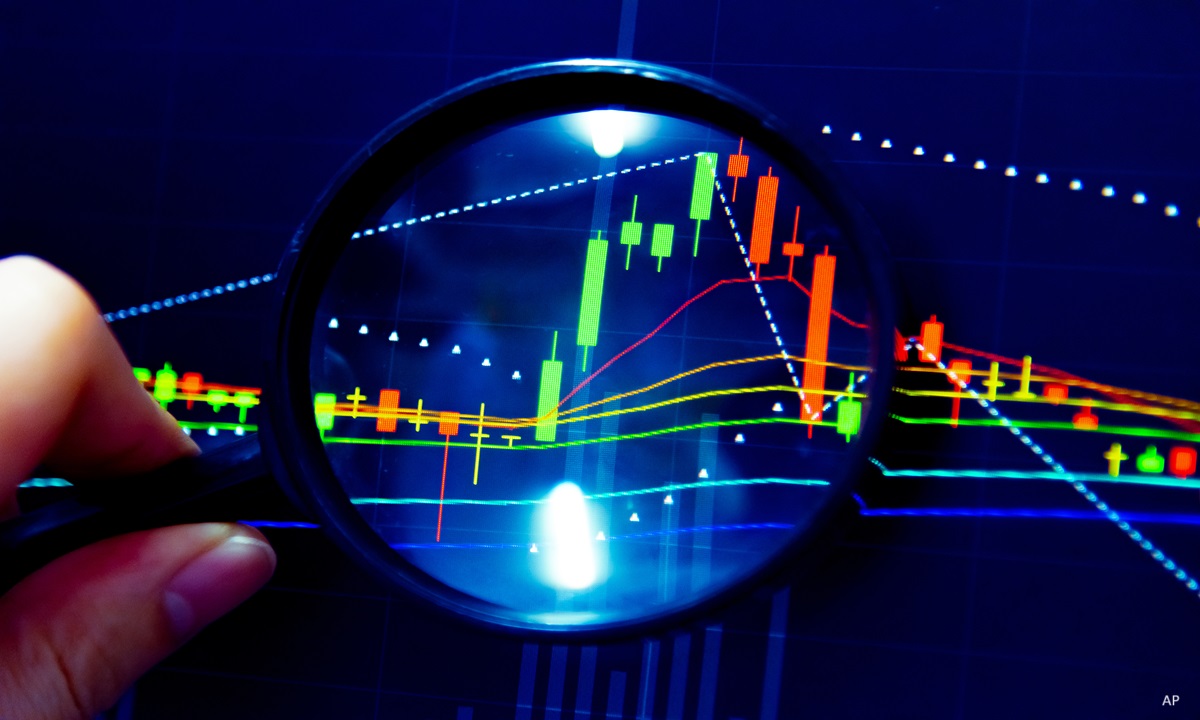Was the market's wild downward swing last Monday a brief unpleasant episode or a harbinger of something really painful and long-lasting?
For the moment, it appears to be the former; by Tuesday, stocks shook off their woes and regained a portion of the ground they'd lost the day before. Wednesday was another up day.
But more than 10 years into a bull market, it's only reasonable to start preparing, both mentally and financially, for a market that goes down and stays down. And goes down some more.
How much to prepare for the potential for extended market weakness depends largely on life stage. People who are many years from retirement can reasonably choose to do nothing during a market swoon, or they may even use it as a buying opportunity. Coping during a down market is primarily a mental exercise for people who are still working and adding to their accounts; the key objective is not to sell into the weakness.
Retirees, on the other hand, tend to experience weak markets differently, and more viscerally, than their still-working counterparts. That's because they're no longer living off their paychecks but rather their portfolios. And once portfolio contributions cease and withdrawals start, their portfolio balances are a finite resource. Coping during a period of market weakness requires mental fortitude, just like when you were working, but it may also require course corrections to help ensure that your portfolio can sustain withdrawals throughout retirement.
If you're already retired or retirement is close at hand, here are some key steps to take in the event of serious market volatility--or better yet in advance of it.
Step 1: Consider where you are in your retirement life cycle
One of the big determinants of how much, if at all, to adjust your retirement plan in anticipation of market weakness is where you are in your retirement life cycle. If you're 75 and you've already been retired for 10 years, a market drop, even a big one, probably won't be a disaster for your plan. That's because the early part of your retirement was marked by strong market returns; the past decade has been a terrific one for stocks. Assuming your portfolio withdrawals were reasonable, it's a good bet that your portfolio was growing at least as fast as you were withdrawing from it. As a result, you've safely made it through the retirement danger zone--the prospect of encountering a terrible market environment right when retirement starts. You may still wish to reduce risk in your portfolio and take other steps to preserve your plan, but an extended bear market is unlikely to permanently impair your portfolio's ability to last throughout your retirement years.
If, on the other hand, you're just embarking on retirement, the possibility of an extended market swoon early on in your retirement is a bigger risk factor and one well worth protecting against. If you're simultaneously withdrawing from a portfolio as it's declining, that leaves less in place to recover when the market eventually does. That's what retirement researchers call sequencing risk, or sequence-of-return risk. You can protect against sequencing risk in a variety of ways, including building stakes in cash and bonds and reducing your portfolio withdrawals in the event of a weak market; these strategies are all discussed in depth below.
Step 2: Check liquid reserves
Ultimately, whether you encounter bum returns early in retirement comes down to luck of the draw. Of course, you might have some leeway to keep working if a bad market occurs around the time you thought you'd retire, but you probably wouldn't want to hold off more than a year or two. And if you've already retired, you wouldn't likely relish having to head back to work for financial reasons. Instead, the best way to confront weak market returns at the outset of retirement is at the portfolio level, both in terms of how much you withdraw (more on that below) as well as where you withdraw from.
Whether you're employing a bucket approach or some other strategy for managing your cash flows in retirement, I like the idea of keeping liquid (cash) reserves on hand to withdraw your near-term expenditures from. Having a bulwark of cash and bonds helps ensure that you're not withdrawing from the portion of your portfolio that's most likely to incur big losses at any given point in time: stocks. Just be careful to not overdo your cash holdings; over longer time frames, there's apt to be an opportunity cost for staking too much in guaranteed assets. My bucket portfolios call for holding two years' worth of portfolio withdrawals--that is, income needs above and beyond what's provided through government pensions, an annuity, or other guaranteed source of lifetime income--in cash instruments.
In addition to checking the adequacy of your liquid reserves, also make sure that you're maximizing your income from these holdings. Money market mutual funds, online savings accounts, and CDs will tend to be investors' best source of yield today.
Step 3: Review your long-term asset allocation
In addition to setting aside cash for very near-term portfolio withdrawals, it's also important to think through your portfolio's long-term asset allocation given your spending needs. After all, the aforementioned cash holdings will only tide you through a two-year bear market for stocks; you need to have additional reserves in case stocks fall and stay down for a decade.
Holding at least a portion of your portfolio in bonds provides a further bulwark against needing to withdraw from depreciated equity holdings. My model bucket portfolios call for parking eight years' worth of portfolio withdrawals in bucket 2, which consists largely of high-quality bond funds. Even though bucket 2 would likely underperform stocks over a very long time horizon, it's unlikely to have negative returns in any rolling three- or five-year period. As such, a retiree could draw upon it for cash flow needs if the cash holdings in bucket 1 were exhausted and stocks were still depressed. Combined, the cash and bonds protect against a 10-year period in which equities post losses.
As you review your bond holdings, don't just stop at the size of the allocation; also consider the type of bond holdings you have. If the goal is to build a defense against spending from a shrunken equity portfolio, it's wise to concentrate on high-quality bond investments, which have historically held their ground or even gained a little in periods of equity-market shocks. Higher-yielding bond types, whether junk bonds, emerging-markets bonds, or bank loans, boast more impressive yields but will tend to be less useful diversifiers.
Step 4: Derisk the risk
Rightsizing your bond holdings relative to equities is a key way to ensure that you have enough safe(r) assets on hand to help you ride out a tough market. But it's also valuable to take a closer look at the composition of your equity holdings. Can you reduce the risk in your equity portfolio while simultaneously maintaining a generous allocation to the asset class?
While it's impossible to guess which market segments will bear the brunt of any future sell-off, ensuring ample diversification helps mitigate extreme volatility. I also think it's reasonable for retirees to emphasize stocks that have historically been less volatile than the broad market. There are worthwhile low-volatility equity funds that can help achieve that aim, but a focus on quality, financial health, and dividends will do that, too.
Step 5: Review your spending rate
Finally, the prospect of sustained market turbulence should be impetus to check up on your spending rate from your portfolio. In addition to reviewing and adjusting your asset allocation, one of the best things you can do to maintain the sustainability of your retirement portfolio (that is, ensure that you don't run out of money prematurely) is to be prepared to rein in spending if a big equity shock presents itself. That's not to say you need to panic and begin stocking up on ramen packets at the dollar store. But the type of strong market that we've enjoyed over the past decade can contribute to a "wealth effect"; many retirees may have unknowingly let their spending rates drift up. If you haven't checked your spending rate lately, it's a good time to do so. It's also a great time to conduct a drill of which budget line items you'd cut back on if you needed to.











:quality(80)/cloudfront-us-east-1.images.arcpublishing.com/morningstar/54RIEB5NTVG73FNGCTH6TGQMWU.png)








